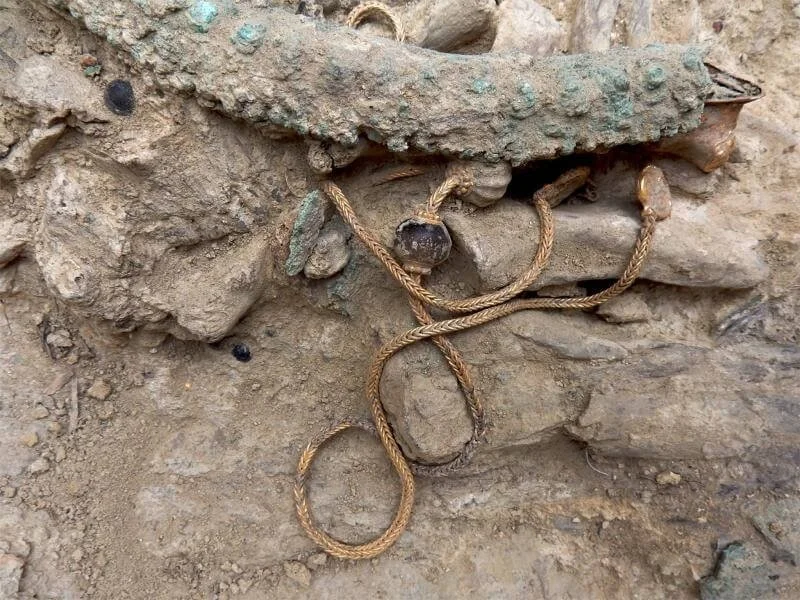Archaeologists have found a perfectly preserved 1,000-year-old wooden ladder in the UK. Scientists have resumed their excavations at a location known as Field 44 close to the community of Tempsford in Central Bedfordshire, and they have made intriguing new archaeological finds.
Excavating an Iron Age roundhouse. Credit: MOLA
Some of the discovered wooden Iron Age artifacts, according to the MOLA archaeology team, are exceedingly uncommon.
The majority of constructions inhabited throughout the Iron Age (800 BC – 43 AD) were roundhouses, hence wood would have been heavily utilized in earlier times. Typically, the only traces of the roundhouse structures left behind are post holes where the wooden posts have long since rotted away. This is due to the fact that wood, when buried in the ground, decomposes quite quickly.
In fact, there isn't much wood left at any of England's archaeological sites!
How Did Archaeologists Find Some Wood If Wood Decomposes So Quickly?
Fungi and small creatures, such as bacteria, break down wood. However, if the wood is in really moist ground, it may absorb water and swell up. Wood that is buried in wet ground and is dripping with water does not dry out. This indicates that the wood cannot receive oxygen. Without oxygen, the bacteria cannot survive, thus the wood cannot decay.
This 1,000-year-old wooden ladder has been unearthed in the UK. Credit: MOLA
"A shallow valley located in a portion of our excavation area is nevertheless a natural gathering place for groundwater. This basically means that the earth is always soggy and moist. The local community would have utilized these shallow wells to collect water during the Iron Age, thus it would have been the same then. This resulted in highly difficult work for the archaeologists during excavation, but it also produced some amazing finds, according to a press release from the MOLA.
Wattle panels. Credit: MOLA
For 2000 years, a number of amazing wooden artefacts were kept in the soggy ground. One of these was an Iron Age ladder that the locals used to access the shallow well's water supply.
A seemingly basket-like device that is not one has also been discovered by scientists. It is actually daub, which is formed of mud, crushed stone, straw, or animal hair, covering wattle panels, which are made of interlaced twigs and branches. This panel was used to line the waterhole, but for thousands of years, wattle and daub was also employed to construct homes. It is quite rare to find some that have survived from the Iron Age or earlier.
Reconstructed roundhouse. Credit: MOLA
In this image of a recreated Roundhouse, you can see a similar weaving design and daubed walls.
The purpose of some other wood discovered by researchers, including some little posts, is yet unknown.
Archaeologists need to move fast after finding intact wood. The wood must be kept moist until it can be meticulously dried out in a lab by knowledgeable conservators. It will start to decay swiftly and could entirely dissolve if it isn't kept moist.
Excavating the small wooden post. Credit: MOLA
What Lessons Can We Draw From Wood?
These wooden objects have a lot to teach us, I believe. Finding out what kind of wood they used will reveal information about the trees that grew in the area, as well as how people made and used them in their daily life. This can assist us in reimagining the landscape at the time and the evolution of that area over time.
Wood isn't the only material that may be kept in these moist conditions! Insects, seeds, and pollen are also present. These all aid in the construction of a picture of the Bedfordshire and Cambridgeshire landscape from 2000 years ago by our environmental archaeologists. They have already recognized some of the plants that were growing nearby, like buttercups and rushes, by looking at pollen and plants preserved in the water, the MOLA science team said.
Work on archaeology at the location is ongoing. Our conservators are now meticulously drying up the wood so that the experts may inspect these wooden artefacts.











